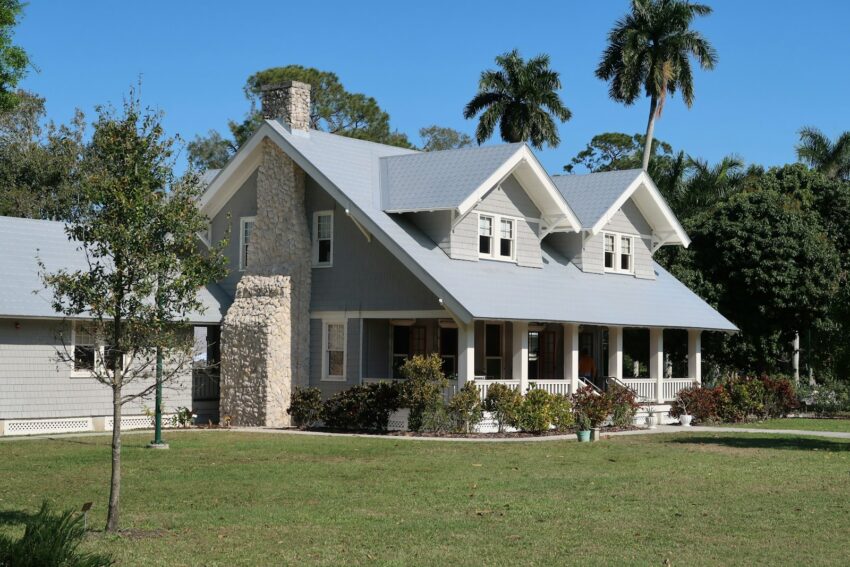Remodeling has a way of revealing more than expected. You start with clear plans, but once the walls open, new issues surface, adjustments follow, and decisions stack up quickly. With so much happening at once, practical features like access doors sometimes get added too late—or overlooked entirely. That oversight can lead to bigger problems later.

Access doors play a key role in keeping essential systems within reach. Recessed models take it further, offering a more refined approach by blending into walls or ceilings while allowing easy access during inspections, repairs, or upgrades.
In this article, we’ll examine why recessed access doors are a smart addition during remodeling.
What Makes Recessed Access Doors Different?
Recessed access doors sit at level with the surrounding surface, creating a smooth, integrated finish. They’re built with a recessed frame that can hold tile, drywall, plaster, or similar materials. This design is especially useful in settings where appearance matters, including residential interiors, retail stores, office buildings, and other commercial spaces.
Why Recessed Access Doors Make Sense During Remodeling
Avoid Costly Rework
It’s easy to overlook access doors when focused on the big-picture finishes. But skipping them now usually means paying for it later. Once the walls are painted and everything looks right, realizing you still need to reach plumbing or wiring becomes a hassle.
You’ll have to cut into the wall, fix it afterward, and hope the patch blends in—not always successfully. Planning for recessed doors upfront saves you from that mess and those extra costs.
Speed Up Maintenance Work
Let’s be honest—no one wants to cut into a finished wall. It’s messy, time-consuming, and leads to more work than expected. By the time you prep the area, figure out where to cut, do the job, and clean everything up, a simple fix turns into a half-day project.
Recessed access doors take all that hassle out of the picture. Built in during remodeling, they make future maintenance a breeze.
Reduce the Risk of Accidental Damage
Even simple maintenance tasks can become a safety issue without a proper access door. When there’s no built-in entry point, the only way to reach a valve, wire, or pipe often involves cutting into finished surfaces. That means sharp tools, uncontrolled force, and working blind—all of which raise the risk of injury.
A poorly aimed cut can hit a live wire. A loose piece of drywall can fall unexpectedly. Someone standing on a ladder, trying to pry open a section of ceiling without knowing what’s behind it, can lose balance in an instant.
Recessed access doors help avoid all that. By providing a clear, built-in entry point, they remove the need for makeshift solutions. Maintenance teams can work quickly, safely, and without damaging the structure.
Make Future Upgrades Easier
As buildings age or technology advances, upgrades become part of the process—adding new electrical features, rerouting data lines, or improving climate control systems. These changes shouldn’t come at the cost of tearing into finished walls or ceilings just to reach what’s behind them.
Recessed access doors offer a practical solution built right into the structure. They act as discreet but dependable entry points when included early in a remodel. There’s no need to damage surfaces or improvise access later on.
Limit Disruption to Daily Life
Renovation takes time, planning, and a lot of effort—but the job isn’t truly done if basic maintenance later throws the space into chaos. Recessed access doors help keep that from happening. Installed during remodeling, they act as low-profile access points that blend into the space yet stay ready when needed.
Technicians can open the panel, complete the work, and leave—no demolition, no rearranging of furniture, and no need to shut down entire rooms.
It’s a smarter way to prepare for what comes next. Instead of treating future upkeep like a disruption, it becomes part of the everyday rhythm—quiet, contained, and out of the way.
Increase Long-Term Property Value
Every smart detail adds to the overall value of a space—and recessed access doors are one of them. They show that long-term usability was considered, not just short-term appearance. When access is planned from the start, it tells inspectors, buyers, or future occupants that the build was done with care.
Access doors that are thoughtfully placed and well-integrated support the longevity of systems behind the walls. They also reflect good planning and professional standards, which can positively influence resale, inspection outcomes, or tenant satisfaction.
How to Select Durable Recessed Access Doors for Your Project
Now let’s find out how to choose recessed access doors that won’t just look good—but hold up over time. From material strength to installation compatibility, here are the key things to consider when selecting a panel that fits and performs well long after the remodel.
-
Check the Material
Durability starts with the material. Look for recessed access doors made from steel, aluminum, or other corrosion-resistant metals. These materials hold well in residential and commercial environments, especially in areas with moisture, heat, or regular wear.
-
Ensure It’s Compatible With the Wall or Ceiling
Not all recessed doors are one-size-fits-all. Choose a panel that matches the thickness and type of the wall or ceiling. Drywall, tile, and plaster all require different considerations. Some recessed doors are designed specifically to accept finishing material, which helps keep the final look clean and consistent
-
Look at the Locking or Latching System
A good recessed access door should stay secure without being hard to open. Cam latches, screwdriver-operated locks and concealed mechanisms are all common. Choose a latching system based on how often the door needs to be accessed and who will use it.
-
Review the Installation Process
Durability isn’t just about materials—it’s also about proper installation. Look for recessed doors with clear instructions, pre-drilled holes, or mounting hardware that simplifies the process. The more straightforward the installation, the less risk of damage during setup or shifting later on.
-
Choose Insulated Models for Better Temperature Control
Recessed access doors can affect a room’s insulation if not properly selected. In areas where drafts or temperature swings are a concern, an uninsulated panel creates a weak spot that lets heat escape or outside air creep in.
Insulated models help solve that. They’re built to reduce air transfer and maintain a more consistent indoor temperature. This is especially useful for panels installed on exterior walls, basements, or near attics—anywhere thermal performance matters.
To Sum Up
Remodeling is easier when everything’s planned to work together—style, structure, and access. Recessed access doors fit right into that flow. They stay out of sight, stay useful, and make it simpler to keep things running smoothly without interrupting the space.
